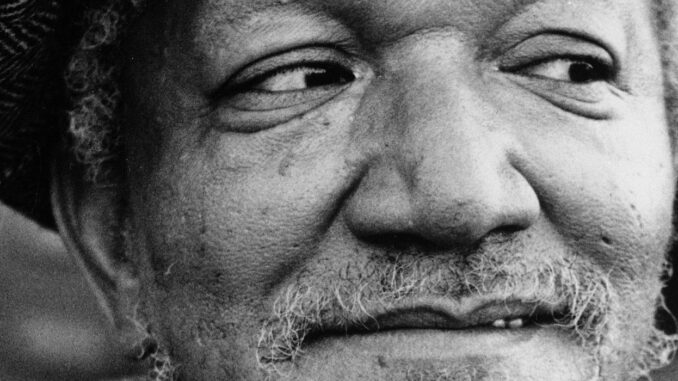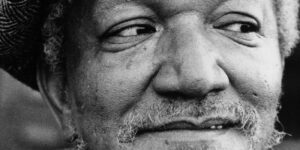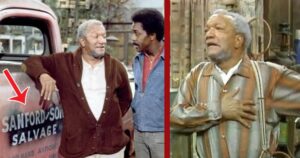
Sanford and Son: 5 Reasons the Show Has Had Good Longevity (& 5 Reasons Why It Didn’t Work)

In 1972, Sanford and Son arrived to revive television. One of Norman Lear’s many successful shows, this is how it has endured or how it has dated.
In 1972, Sanford and Son arrived to change the television landscape. One of Norman Lear’s many successful shows, the sitcom remains loved and analyzed to this day. Redd Foxx plays father Fred Sanford, and Demond Wilson plays his son, Lamont. The two run a second-hand shop on the show.
Sanford and Son premiered a year after Lear’s All in the Family and overlapped with The Jeffersons for many years. The show is actually based on a British sitcom called Steptoe and Son that began in 1962. As with many chapters of television history, Sanford and Son has both its strengths and weaknesses. Here are five reasons why the show is dated (and five reasons why it isn’t).
Yes: Shakespeare Summary
One of the best Sanford and Son episodes is “Lamont as Othello” season three. This episode highlights how Lamont became a budding actor. He is writing Shakespeare’s Othello. The story begins when Lamont follows the lines of his friend, Rollo. After that, Lamont avoided his father because he had a colleague coming to practice. White actress Marilyn is playing Desdemona opposite Lamont’s Othello.
Fred watches the rehearsal and thinks Lamont is strangling Marilyn. Lamont clears things up with the most accurate one-sentence summary of Shakespeare that exists: “Othello is a black man and he’s married to this white woman, and he’s suspicious of her.” lied to me so I strangled her to death.” High school students often need help reading Shakespeare, but Lamont has had the secret since the ’70s.
Not available: Ethnic/racial slurs
In addition to racial stereotypes and prejudices of African Americans, other ethnicities were also ridiculed on the show. For example, in the fifth season episode titled “Sanford and Rising Son”, Sanford attempts to turn his house into a Japanese restaurant with the help of chef Ah Chew (played by Pat Morita).
While it’s not impossible to happen in real life (look up basketball player and coach Ah Chew Goo), the name Ah Chew could be an intentional joke by the writers. It doesn’t work today.
Yes: Resourcefulness
The essence of Fred’s career is taking old things and giving them a second (or third, or fourth) life. He’s not just resourceful with his scraps; he also looks for more opportunities for himself to get ahead.
Now, this is so bad that it turns into tax evasion in season six (Fred’s way out is mail-order clerical ordination). However, Fred’s little plans throughout the show aren’t always so risky and they’re always creative.
Yet: Sex jokes
The social climate of the 1970s still had a long way to go in its treatment of gay individuals. Sanford and Son is one of many examples. In the season three episode titled “Lamont, That You?”, Fred’s friend Bubba sees Lamont and Rollo walking around a gay bar and tells Fred.
Fred does not accept the possibility that his son is gay so he tries to ensure that this is not the case. Ironically, Rollo saw Bubba and Fred in the gay bar (as they were investigating it) and told Lamont, who was involved. Obviously, this is not a timeless plot and is very problematic.
Yes: Cultural preferences
The season four episode titled “Tower Power” showcases Fred Sanford’s artistic side. He was fascinated by art he saw at an abstract gallery. Fred decided to try his hand at abstract sculpture.
He definitely has the material. The characters have mixed reactions to Fred’s salvaged materials. Today, recycling and regeneration are valuable parts of modern art. Fred was ahead of his time.

Not yet available: Screen time
Frank Lloyd Wright famously called television “gum for the eyes.” General statements are something of a herd mentality of the past. Opponents often proclaim the evils of television and list its negative effects, especially on children. In the fifth season of Sanford and Son, this zeitgeist emerged. Lamont was concerned that Fred was spending too much time in front of the TV, so Fred was hypnotized to try to break this habit. Lamont emphasized that exercise is important and that no one needs to stay in bed all the time.
However, television is no longer “gum for the eyes”. We’re in the era of “must-see TV” in which many shows are becoming as popular as novels or musicals.
Yes: Race relations
Sanford and Son asked people to talk about race. It’s not hidden or forgotten like in some shows of the era. Fred displays prejudice against other races and ethnicities, but he opens up important conversations about the relationship between blacks and whites.
He confronts white people when they treat him differently, and he seeks justice, like when Lamont received a traffic ticket from a white police officer in the third season.
Not yet available: Mold
While it is important that the 1970s Black family is highlighted in this show, there are still some flaws in the way race and ethnicity are presented. It’s okay that Fred is a lazy guy, but the writers created a stereotype of laziness and messiness with the character of Fred.
He tries to keep his junkyard business going, but some people think Fred should have been given a more lucrative job in the series. His son, Lamont, was an aspiring actor, but Fred often scoffed at this career choice.
Yes: Self-reflection
Despite Fred’s flaws, he occasionally reconsiders his life and decisions.
A great way to see this is to watch the classic Christmas episode from season five, “Ebenezer Sanford.” In the style of A Christmas Carol, Fred is guided through specific choices and stages in his life. It’s a meaningful story that’s not to be missed when it’s time to watch the holiday episodes.
Not yet available: Fashion
The 70s look is quite appealing. It’s true that everything is cyclical and this decade has definitely been around before. However, flared pants, loafers and button-down shirts with wild patterns are no longer in vogue.
Sanford and Son’s clothes are still fun to look at, as is Fred’s adorable newsboy hat.
